The State Fair Parking Lottery
How much is the curb space in front of your house worth? How much does your city act like it's worth?
For 12 days each summer, the St. Paul, Minnesota, neighborhood I grew up in becomes the front door to the Minnesota State Fair, the largest state fair in the U.S. by daily attendance. Over 100,000 people per day flood into the fairgrounds, and one side effect for those who live nearby is a crash course in parking economics.
There are plenty of good ways to get to the fair, and driving is far from the best of them. Biking is easy on a new dedicated path, buses that run every few minutes will drop you off literally at the front gate, and there are hundreds of park-and-ride shuttles from around the metro area as well. Nonetheless, the fair is such an enormous event, and it draws so many people from far outside the Twin Cities who aren't habitual transit users, that inevitably drivers pour into the residential neighborhood.
Dozens of the neighbors respond by becoming temporary entrepreneurs. Many homeowners—including nearly everyone on a few blocks closest to the main gate of the fairgrounds—turn their lawns into impromptu parking lots. This can net the owner of a normal-sized yard a couple thousand dollars over the 12-day run.
"Parkers," as they call themselves, chit-chat with each other from opposite sides of the street, compare notes, and certainly scope out each other's pricing, in the same way that gas stations are always eyeing each other's price so as neither to be undercut nor leave potential profit on the table. The vibe is more cooperative than competitive, though. Neighbors will trade shifts with each other so as not to be tethered to a lawn chair all day. Someone who doesn't have room for a larger truck or SUV might shout down the street to a friend who does. One block with a prime location plays "baseball," as a friendly neighbor explained to me: a "batting lineup" of participants get to take turns ushering cars into parking stalls, and they share the proceeds.
(Other kinds of pop-up entrepreneurship are visible outside the fairgrounds, too. Kids set up lemonade stands. Bicycle rickshaws transport people to their cars for a fee. Food trucks slinging mini donuts, egg rolls, and barbecue literally rent out front yards on one block: they are essentially ephemeral ACUs, granted special dispensation for 12 days to do what would be illegal in this residential zone the rest of the year.)
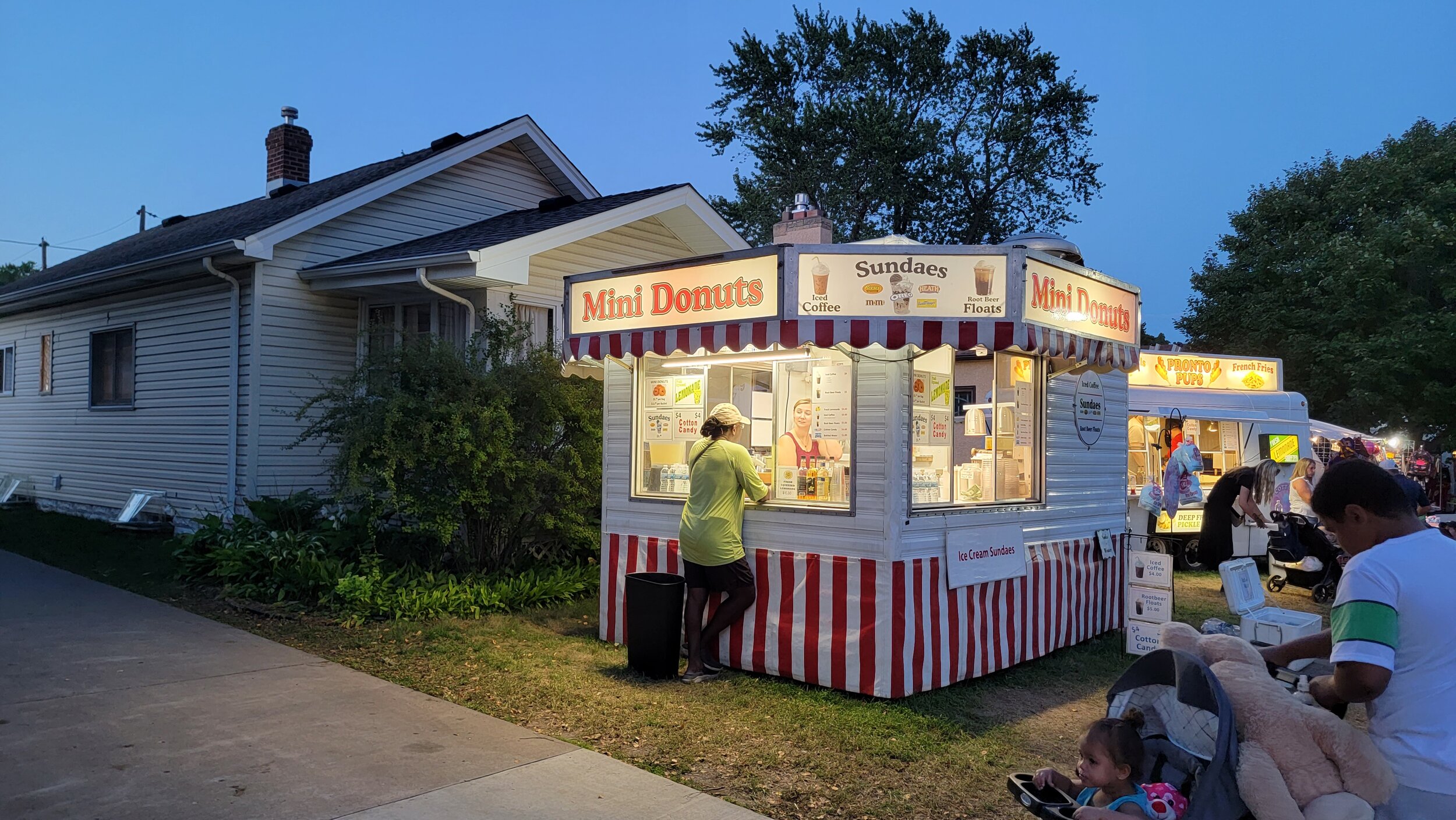
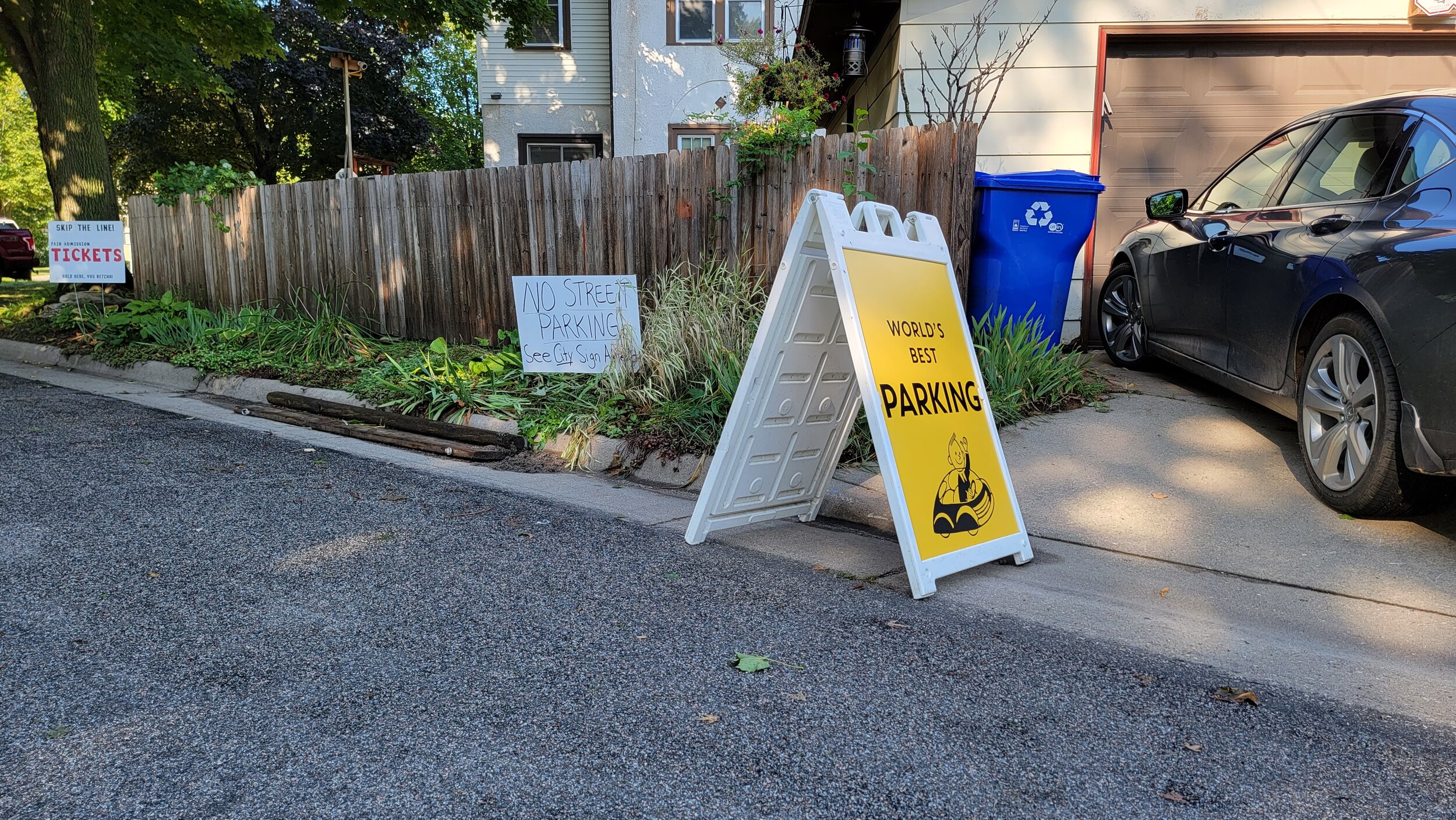
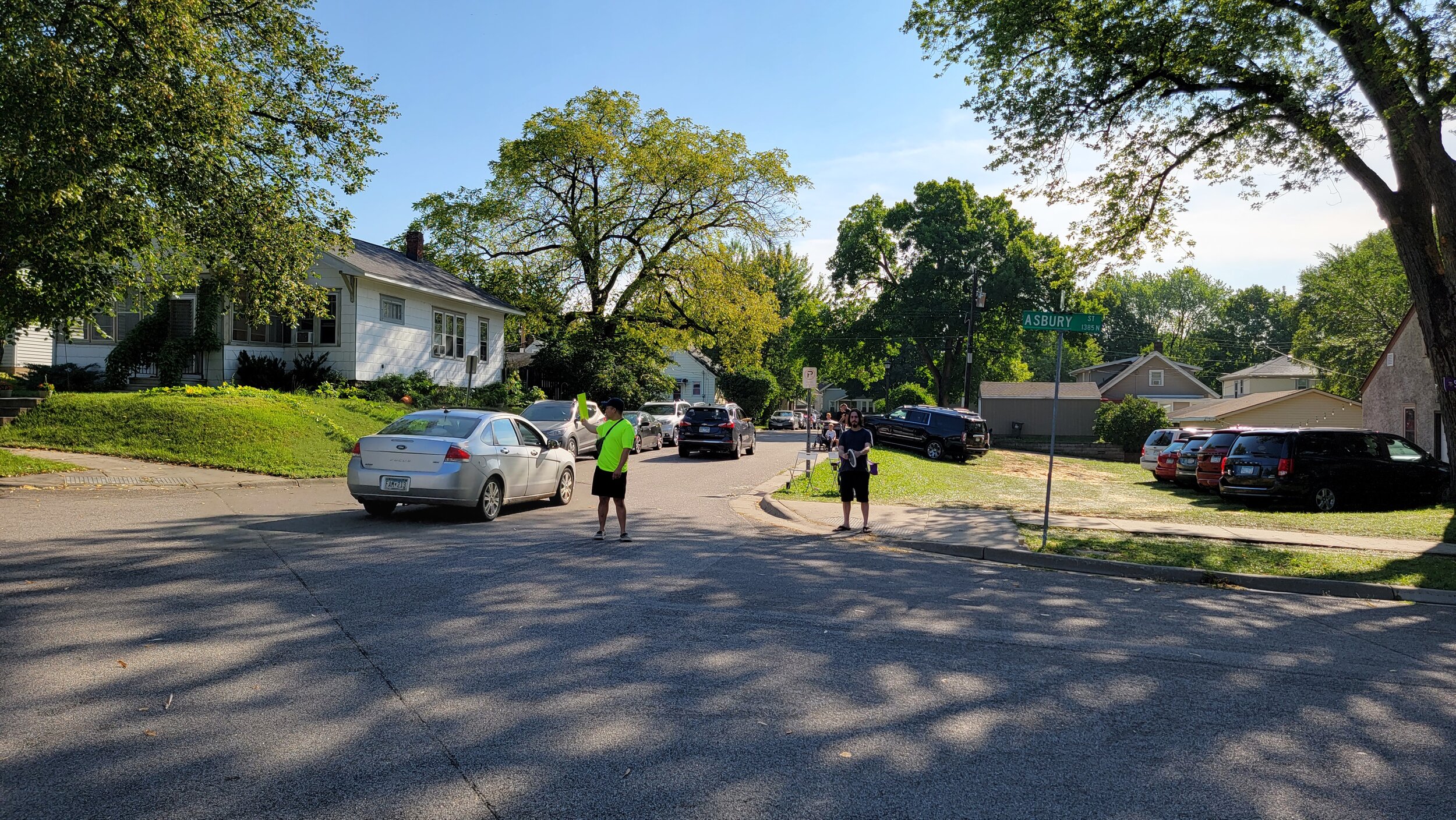
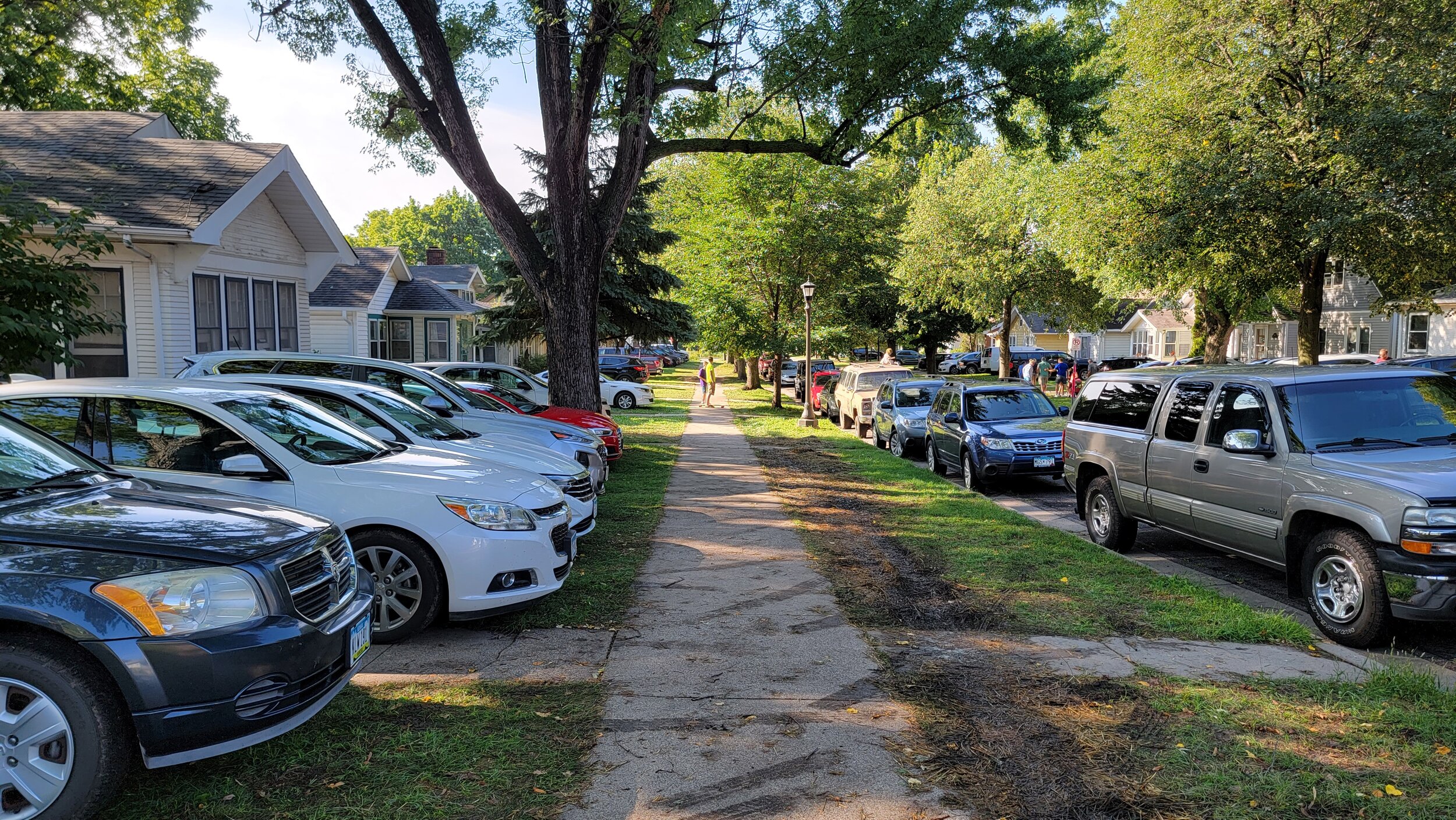

All this would just be an entertaining object lesson in capitalism and free enterprise, but the parking aspect is also a lesson in the incoherence of parking policy. A quick survey of handmade signs reveals the going market rate for a parking space in my neighborhood during the fair, and the answer is between $15 and $40, depending on how close to the gate you are and whether you get to keep your keys or leave them with a stranger.
So how much do you think the City of St. Paul values a parking space in the neighborhood during the State Fair?
The answer: A whopping $0.00.
The Public Parking Lottery
The city does not charge for on-street parking on any of the streets adjoining the fairgrounds, and as a result it fills up almost immediately. You get a space in one of two ways: show up very early in the morning, or win the lottery, essentially, and arrive as another fairgoer is pulling out.
On many streets, one side allows parking and the other does not, I'm told so that emergency vehicles can fit through. (We should get smaller emergency vehicles, as it would save money and cut down on speeding, but I digress.) This fact, in any case, leads to the bizarre sight of blocks where the curb is entirely empty, and all the cars are in the front yards instead:
On some of the neighborhood streets, however, the city does ration parking, just not by price. Permit parking was instituted a decade or so ago by request of a noisy contingent of neighbors; it applies from May through September, and was implemented less because of the State Fair than the several months of heavy weekend traffic to nearby Como Park, which sports a zoo and other attractions. These residents complained that they frequently couldn't park directly in front of their own houses (although every house in the area has off-street parking, either via driveway or alley), and the city obliged and established a permit zone.
What happens in the permit zones during the State Fair, when parking demand is overwhelming? The answer is that they fill up anyway by mid-day. Some people don't notice they're in a permit area, but many do. (I know because they ask my dad if the permit requirement is enforced, and he tells them it is.) Given the expense of the alternatives and the value of their time, the risk of a $40 fine is just another price tag.
Parking Always Has a Price
Many of us have a notion that because parking in the public right-of-way is so ordinarily offered to the public for free, that "free" is its natural and correct price. This is not true, and the proof is visible in this jarring situation, in which what is essentially a lottery for scarce free parking coexists with private entrepreneurs charging the actual market rate.
Parking space has both a price and a value whether or not city policy acknowledges it.
In my neighborhood, most of the year, the market-clearing price of parking is likely zero. There is more available on-street parking than there will ever be demand for. On nice summer weekends at Como Park, or during occasional special events there or at the fairgrounds, I suspect people would gladly pay a nonzero price to park. During the State Fair, the market rate rises to $15 to 40 a day.
Should the city put in pay stations and charge for parking, given this observation? I genuinely don't know the answer, because I don't know the overhead costs and whether they'd be worth it. The actual money just for the 12 days of the fair might well be an inconsequential blip in St. Paul's annual budget.
I do know, though, that not charging when there's genuine scarcity, as is the case during the Minnesota State Fair, has consequences. People circle looking for a space, sometimes around many blocks before they find one, creating far more traffic congestion than would otherwise occur. Parking economist Donald Shoup has done the definitive research on the high cost, in congestion and emissions, of cruising for parking, which accounts for a startling share—30% or even higher—of the traffic in commercial areas. (I suspect it's over 50% of neighborhood traffic near the State Fair.)
We also get to witness various forms of impatient, aggravated, and cutthroat behavior. Drivers gunning it to grab an impossibly tiny on-street space before someone else, then spending the next 5 minutes wriggling their car back and forth to get into it. Drivers parking in front of the lip of our driveway in a effort to turn a non-space into a space, making it impossible for us to back out.
The economic lesson here is that parking will always be rationed when demand is high. You can ration it through price. Or you can ration it through people's willingness to pay in time and hassle. Or you can let spontaneous entrepreneurs fill the gap between demand and supply.
These lessons are far more important in places that experience my-neighborhood-during-the-fair-like levels of parking demand on a far more regular basis. We can deal with 12 days of chaos, but in the places where this is a more permanent state of affairs, failing to charge an appropriate rate for street parking can become a very real drag on quality of life. If you've ever tried to park a car in certain neighborhoods of San Francisco or Boston, you know exactly what I mean.
St. Paul is actually a relative leader in parking policy. The city recently joined the elite club of major U.S. cities to have fully abolished mandatory parking minimums for new development. This is a really smart and overdue move. No longer will the obligation to provide more parking than needed be a crippling expense for small businesses, homeowners who want to put in an ADU, or developers trying to create affordable housing. The city should be applauded for that.
The next step just might be to apply some Shoupian wisdom, and make an honest assessment of what the curb space the city owns is actually worth—not just in my neighborhood but in all of them. Every city owes it to its residents and other taxpayers to be a good steward of its public street space by taking stock of this, rather than just defaulting to giving away free parking to those who've won a proverbial lottery.
All images by the author.

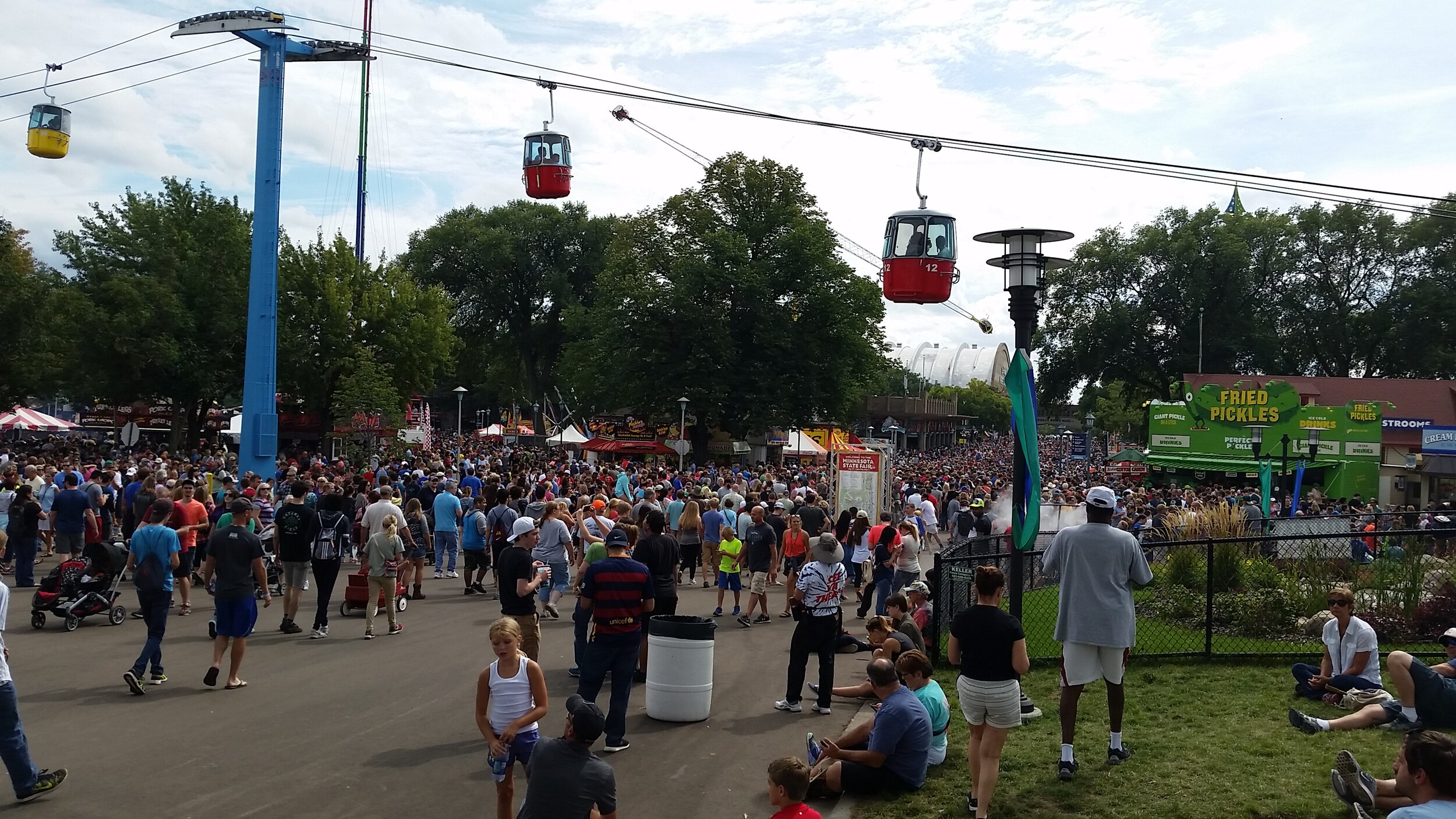

Daniel Herriges has been a regular contributor to Strong Towns since 2015 and is a founding member of the Strong Towns movement. He is the co-author of Escaping the Housing Trap: The Strong Towns Response to the Housing Crisis, with Charles Marohn. Daniel now works as the Policy Director at the Parking Reform Network, an organization which seeks to accelerate the reform of harmful parking policies by educating the public about these policies and serving as a connecting hub for advocates and policy makers. Daniel’s work reflects a lifelong fascination with cities and how they work. When he’s not perusing maps (for work or pleasure), he can be found exploring out-of-the-way neighborhoods on foot or bicycle. Daniel has lived in Northern California and Southwest Florida, and he now resides back in his hometown of St. Paul, Minnesota, along with his wife and two children. Daniel has a Masters in Urban and Regional Planning from the University of Minnesota.